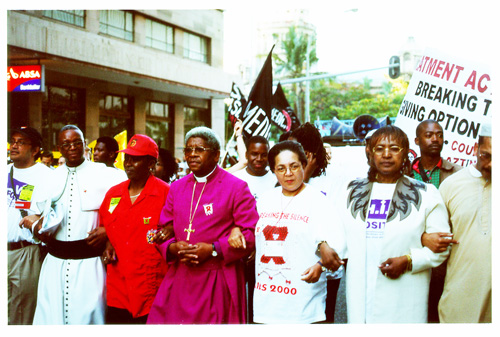Ten years ago, with AIDS-related deaths and new infections rising steadily around the globe, President George W. Bush signed the bill creating The President’s Emergency Plan for AIDS Relief (PEPFAR). It committed $15 billion over five years to, as he stated at the time, “turn the tide against AIDS” globally. Ten years later, that goal seems in sight. “Today we are drawing near the tipping point in the AIDS pandemic, in large part because of America’s investment in PEPFAR,” says Chris Collins, amfAR vice president and director of public policy.

In 2003, approximately 50,000 people in sub-Saharan Africa were receiving ART. Today, millions in the region receive HIV care through PEPFAR.
However, cuts to PEPFAR’s budget are endangering this historic progress. “We actually now have the capacity to completely control HIV,” says Mark Dybul, as principal architect of PEPFAR as former U.S. Global AIDS Coordinator and the current executive director of the Global Fund to Fight AIDS, Tuberculosis and Malaria. “So it’s a really historic moment and we need to grab it. If we don’t, we already have indications that infection rates will start to go back up.”
PEPFAR is the largest international program responding to the global AIDS epidemic and the largest commitment one nation has ever made to combat a disease internationally. When it began, approximately 50,000 people in sub-Saharan African were receiving antiretroviral therapy (ART). Today, more than five million people worldwide are receiving ART through PEPFAR, up from 1.7 million in 2008. In 2012, this included 750,000 HIV-positive pregnant women, allowing more than 230,000 infants to be born HIV free. In 2012, it also provided HIV testing and counseling for more than 46.5 million people and direct care and support for more than 15 million people, including 4.5 million orphans and vulnerable children. Due in no small part to these efforts, new HIV infections haven fallen 20 percent since 2001, and AIDS-related deaths have decreased from 2.3 million in 2005 to 1.7 million in 2011.
In 2008, Congress renewed PEPFAR and, with bipartisan support, voted to more than triple its funding to $48 billion over five years. In November 2011, then-Secretary of State Hillary Clinton announced that achieving an AIDS-free generation was not only a real possibility; it was a “policy priority” for the U.S. government. However, current PEPFAR funding levels are down 12 percent over their height in 2010, and the White House has proposed additional cuts for 2014, possibly putting PEPFAR at its lowest funding level since 2007. “It’s time to recommit to our investment in this transformational program,” says Collins.
On Tuesday June 18th, at 10 a.m., Secretary of State John Kerry will commemorate the anniversary by hosting a discussion on the global fight against AIDS at the Department of State. Watch it at http://www.state.gov.